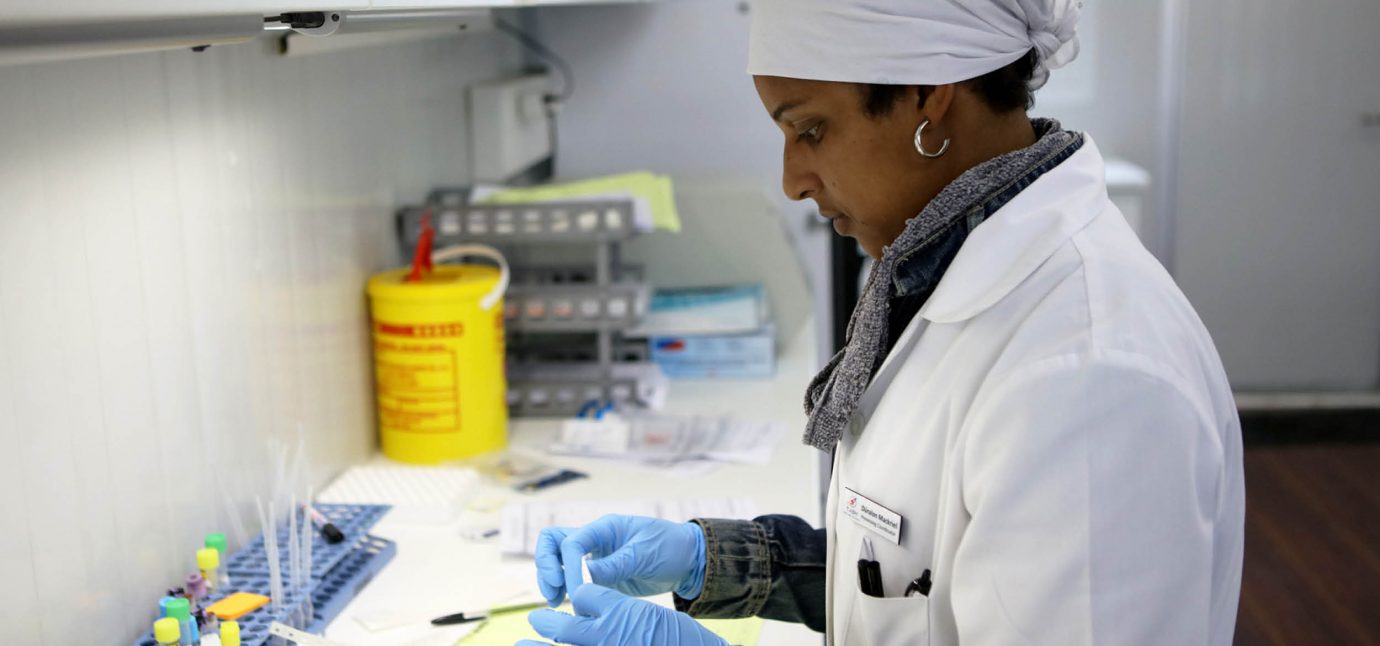TB Alliance’s ZeNix trial in South Africa and Eastern Europe sought to optimize the 6-month treatment regimen with reduced exposure to the drug linezolid
BERLIN (15 July 2021)—The results of ZeNix, a Phase 3 clinical trial that took place in 11 sites across Georgia, Moldova, Russia, and South Africa, revealed that the BPaL treatment remains effective against highly drug-resistant strains of tuberculosis (TB) with either reduced dosage or duration of the linezolid component of the regimen.1 Simultaneously, with the maintenance of efficacy, there was a decrease in linezolid associated side effects.1 The results from the trial, which was led by TB Alliance, a non-profit TB drug developer, were announced ahead of an oral abstract presentation next week at the 11th IAS Conference on HIV Science.
The BPaL regimen—which combines the antibiotics bedaquiline (B), pretomanid (Pa) and linezolid (L)—received its first regulatory approval in August 2019 for use against highly drug-resistant strains of TB.2Historically, treatment would take 18 months or longer, with reported global success rates averaging 43%.3,4
“We now have evidence that the BPaL regimen can be optimized to make it even easier to use,” said Mel Spigelman, M.D., President and CEO of TB Alliance, which developed pretomanid for use in the regimen. “Until recently, patients with highly drug-resistant TB—among the most difficult infections to identify and treat—had to suffer through a combination of as many as eight antibiotics, some involving daily injections, for 18 months or longer.”
The ZeNix trial was a four-arm, randomized, double-blinded study as to dosage and duration of linezolid that enrolled 181 patients with highly drug-resistant forms of TB in South Africa, Russia, Georgia and Moldova. Of these participants, 36 (20%) were HIV positive. Patients were treated for six months with bedaquiline, pretomanid and varying doses and durations of linezolid, with follow up reported thus far to the primary endpoint six months after completion of treatment. The aim of the trial was to evaluate whether the efficacy of the BPaL regimen could be maintained while reducing a patient’s exposure to linezolid and its associated side effects.
The study enrolled participants with extensively drug-resistant (XDR) TB, pre-XDR-TB, or failed or treatment-intolerant multidrug-resistant TB. Per the intent to treat analysis, the success rate for participants receiving the highest dosage of linezolid (1200mg for 6 months) was 93%.1 The efficacy level was similarly high in the remaining arms, reported as 89% among participants receiving 1200mg of linezolid for 2 months, 91% for those receiving 600mg of linezolid for 6 months, and 84% among those receiving 600mg of linezolid for 2 months.1 Dosing of bedaquiline and pretomanid was consistent across the four arms.1
Adverse reactions reported in at least 10% of trial participants included peripheral neuropathy (38% of those receiving 1200mg of linezolid for six months; 24% of those receiving 1200mg of linezolid for two months; 24% of those receiving 600mg of linezolid for six months; 13% of those receiving 600mg of linezolid for two months).1 An evaluation of myelosuppression, as manifest as anemia, found that patients had decreased hemoglobin levels related to linezolid exposure (22% of those receiving 1200mg of linezolid for six months; 17% of those receiving 1200mg of linezolid for two months; 2% of those receiving 600mg of linezolid for six months; 7% of those receiving 600mg of linezolid for two months).1
“The results of this study are very reassuring. With a reduction in the dose and/or duration of linezolid, we can still offer patients a high chance of cure in only six months,” said Francesca Conradie, M.D., principal investigator for the ZeNix clinical trial as well as South Africa’s Clinical Access Program for the regimen.
TB Alliance plans to submit data from ZeNix to a peer-reviewed publication.
About Tuberculosis
TB, in all forms, must be treated with a combination of drugs; the most drug-sensitive forms of TB require six months of treatment using four anti-TB drugs. An estimated 1.5 million people died of TB in 2020, according to the World Health Organization (WHO), although the precise numbers are not known and recent research suggests that TB could have killed as much as half a million more people.4,5
Drug-resistant TB develops when the long, complex, decades-old TB drug regimen is improperly administered, or when people with TB stop taking their medicines before the disease has been fully eradicated from their body—highlighting the urgent need to develop better and shorter treatment regimens. Once a drug-resistant strain has developed, it can be transmitted directly to others through the air, just like drug-sensitive TB. There are over half a million cases of drug-resistant TB each year and its spread undermines efforts to control the TB pandemic.4
About TB Alliance
TB Alliance is a not-for-profit organization dedicated to finding faster acting and affordable drug regimens to fight TB. Through innovative science and with partners around the globe, we aim to ensure equitable access to faster, better TB cures that will advance global health and prosperity. TB Alliance operates with support from Australia’s Department of Foreign Affairs and Trade, Bill & Melinda Gates Foundation, Cystic Fibrosis Foundation, Foreign, Commonwealth and Development Office (United Kingdom), Germany’s Federal Ministry of Education and Research through KfW, Global Disease Eradication Fund (Korea), Global Health Innovative Technology Fund, Indonesia Health Fund, Irish Aid, Korea International Cooperation Agency, Medical Research Council (United Kingdom), National Institute of Allergy and Infectious Diseases, Netherlands Ministry of Foreign Affairs, Republic of Korea’s Ministry of Foreign Affairs, and the United States Agency for International Development. For more information, visit https://www.tballiance.org.
Read more about KNCV’s involvement in BPaL implementation.
* Enrollment was consistent with WHO definitions of XDR TB and pre-XDR TB prior to January 2021
Picture credit: Jessica Wiggs (TB Alliance)

